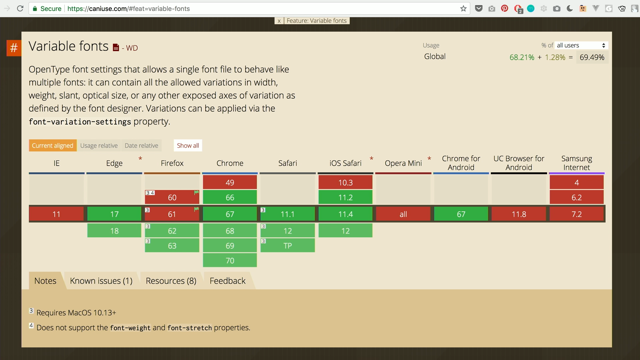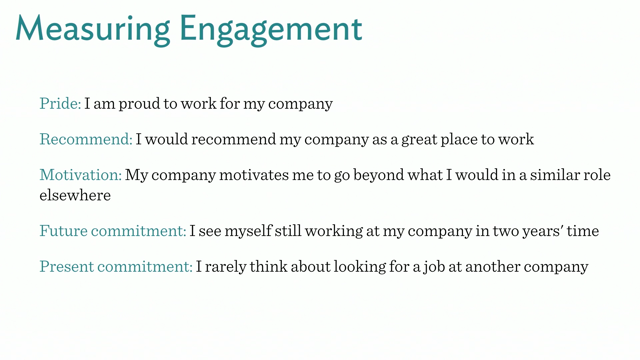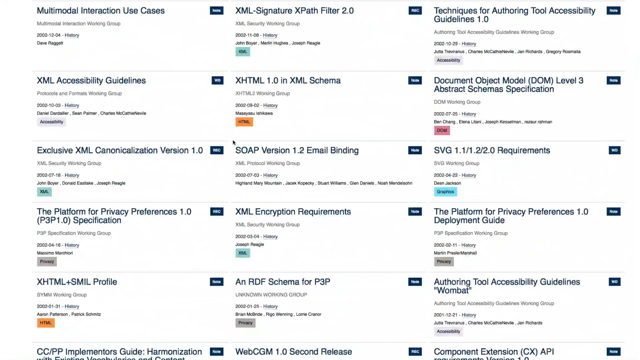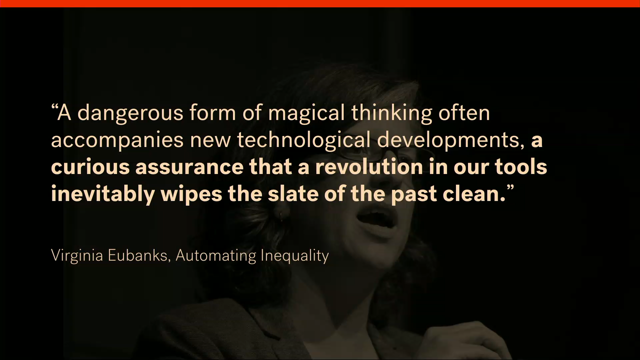Managing Remotely, while Remotely Managing

(lively music) (applause) - [Lindsay] Good day, everyone.
I hope you're all having a lovely day so far. We've got a lot of stuff to get through.
Buckle up; if you don't catch anything, that's totally fine, or catch little bits that you miss.
I'm gonna post the slides and a whole bunch of other resources for learning afterward.
So strap in.
All right, so about me, I have worked in and lead distributed engineering teams, software engineering teams for a little bit over eight years now.
I've lead teams with both follow-the-sun coverage with heavy operational infrastructure responsibilities. I'm currently at Envato leading a product development team.
That's a distributed team of about 15 people engineering-wise, about another 15 or so people in other disciplines around that.
And we're about to grow our engineering on our particular product to about 20 people. Okay, so we're gonna go on a little bit of a journey here. We're gonna start out with the fundamentals, then we go to actually sort of bootstrapping the team, how we go about growing it, and then scaling up to the whole organisation. And I want to introduce this very, very simple sort of two-by-two matrix, massive simplification, but you're all smart people.
You can work it out.
So at the top here we've got practises, down at the bottom, like, practises, processes.
Down at the bottom we've got technology, so different things that we do in distributed teams will sort of fit along that axis.
And then on the x axis, left to right we've got you, and then you've got your team in the middle, and then you've got organization-wide.
So let's start out with practises at organisational scales. So the really simple point of this talk is that if you don't have any management buy-in to do distributed teams, then don't even bother. So if you're really passionate about it, quick, go get a job someplace else that is passionate about it.
If you're trying to introduce it, you know, you've gotta get the full buy-in from your executive. If you don't have that, it ain't gonna work, and I can tell you that from hard-won experience. When we talk about going distributed, there's actually a couple of different ways that we can think about it. So there's working from home,
a couple of different modes of operation, I guess. There's working from home.
There's fully sort of geographically distributed. There's also an outsource model.
So what I'm gonna be talking about today is primarily about working from home and distributed. They'll hold another talk, probably, around outsourcing and the perils thereof.
And when we talk about distributed, there's actually two different things that we're talking about here.
We're talking about geographical distribution and temporal distribution, right? So I can be geographically distributed, say, all up and down the eastern seaboard of Australia, but temporally I'm all in the same time zone, right? And that's got a very different set of dynamics at play compared to a temporally distributed team.
Okay, so let's talk about starting out, and how you would actually bootstrap this process within a team.
So here we're really talking about the practises, not so much on the technology, and we're talking at a team level.
So I have a very strong recommendation here, which is you go all remote or no remote.
So that means even if you've got people that are working and coming into an office, they work in a way as if they were working from home. So that can sort of be a bit weird in that you have people that could be sitting right next to one another in an office, and they're talking to one another via Slack, or maybe they're on, and like, that's the only way they talk to one another. Or maybe they're on the same Google Hangout. So it is a bit weird, outside looking in, but it is one of the most effective ways of creating this level playing field for everybody there. Because if you've got everybody communicating in the same way, using the same tools and technologies and practises, then you aren't creating exclusive environments for people who are in a same physical location. And hybrid just quite simply is hard.
It is possible to do it, but it's a huge amount of work.
I would strongly recommend starting out, say, all remote and then possibly transitioning to hybrid over time, but even then there's very few circumstances where I would legitimately consider doing it that way. Regular face-to-face catch-ups, sounds sort of weird for distributed teams, but this is actually really, really important. So ideally you've got a budget lined up to be able to do this once a quarter.
Realistically, most organisations when you're starting out, you're gonna be doing this maybe once a year and then sort of increasing the cadence of that. But these regular face-to-face catch-ups are a great way for actually knowing at a deeper level the people that you're working with on a day-to-day basis.
You know, building trust takes a really, really long time, particularly working in distributed teams.
One way that you can accelerate that is having these regular face-to-face catch-ups. Establishing rituals is really, really important as well for your own personal sort of health and well-being in working in distributed teams.
And when I'm talking about rituals, what I'm talking about is this thing called priming. So quick show of hands, who here is vaguely familiar with this psychological concept? Okay, a couple people, great.
So priming is exposure to one stimulus that influences a response to subsequent stimuli without conscious guidance or intention.
So what I want you all to do very quickly, I want you to repeat after me.
Say "silk" five times, so one, two, three.
- [All] Silk, silk, silk, silk, silk - Okay, great, now what I want you to do, I want you to spell out "silk." So how do we spell silk? - [All] S-I-L-K.
- Great, and what do cows drink? - [All] Milk.
- Ah, you're all a bit smarter than the average audience. Very good. (laughter)
All right, let's try another one.
If a red house is made of red bricks, a blue house is made of blue bricks, a pink house is made of pink bricks, a black house is made of black bricks, what's a greenhouse made out of? Quickly shout out. - Glass.
- [Lindsay] Glass, yeah, okay, right.
So you're all a bit smarter; that's cool.
Give yourself a pat on the back.
But this is the reason that we want to do priming in a distributed team is it's a way to reinforce this concept of segmentation, creating segmentation between your home life and your work life.
So people roughly fall into one of these two buckets of being a segmenter or an integrator.
So a segmenter creates partitions between work and home, and this works, you know, not just in a distributed team, but just in your general relationship to work, right? Segmenters use rituals to reinforce boundaries. So one of the rituals that I find really helpful that I do when I'm working in distributed teams, is I wear shoes while working.
So it's great for me, like, it's a physical thing that I've got to actually do. And the people that I, you know, my family that are around me, they know that I'm working because I'm wearing shoes.
It's quite simple.
(laughter) Different devices as well.
So I have a work phone, a home phone, a work laptop, a home laptop.
Generally the work laptop doesn't leave the home office. It's a physical space that I've gotta go to to be able to do that work.
So you're creating a physical partition there of, you know, notifications and data and all that sort of thing.
One other really fun one that I've seen with a person that I worked with a while ago, he lives on a city block, so what he would do in an apartment building at the beginning of the day, he would leave his office. He would take the lift down.
He would walk clockwise around the block.
At the end of the day he would go back down the elevator and then walk counterclockwise around, right. So it's these little sort of priming cues that we're doing to be able to set up our mentality for what sort of mode of operation we're in at the moment. We have work mode or home mode.
Standing desks are another really great one for this, because if you're standing, you are gonna get physically tired.
So rather than, like, keeping a chair in your office, why not, when you get tired at the end of a full day of standing, you stop working.
Crazy idea.
(laughter) Integrators on the other hand want to be able to blend the home and work life. You know, integration is actually a fairly legitimate way, particularly when you're leading a distributed team to be able to manage that, that sort of workload. So you know, you might be working from bed here, or maybe you're sort of, you know, working from the couch into the late hours of the night. You have this strong desire to blur the different domains between home and work. Integrators easily transition between these domains as well. They could be multitasking, you know, doing a whole bunch of home activities and a bunch of work activities all in the same physical environment.
And the thing about this is that it's not like you fit into one bucket or the other.
So integration and segmentation is sort of like a spectrum you can fall on. So you might start out sort of more towards the segmenter and then go really hard on it, and then sort of maybe move a bit more towards being, back towards an integrator, and then maybe sort of end up somewhere in the middle. And that will change over time as part of your role, adapting to the changing circumstances around you. One other interesting thing about that is that integrators are more accepting of segmenters than vice versa.
So interesting thing that sometimes happens in offices that, say, decide to roll out childcare, there ends up, you know, to employees that work in those offices, you can end up getting a bit of a backfire effect from people that identify as segmenters, because it's the introduction of aspects of home life into the workplace, right? So it's got these really interesting interplays between these two different groups.
The other thing as well is integrators really need boundaries, and they need strategies for disconnecting, right? It's not like you're all, the real problem with integration is it just leads to burnout, because segmenters report a higher level of job satisfaction, actually, than integrators. Again, this is not specifically distributed teams. It's just the way that you work and what relationship you have to work.
So how does any of this actually work remotely? Well, remote working itself naturally lends itself to integration, right, because you're working in a home environment. And integration is a very, very slippery slope to burnout. When we talk about burnout, the main authority on this is this lady Christina Maslach. Who here is familiar with any of her work? Okay, cool, I'll provide some links afterwards. I highly recommend you read pretty much everything that she's ever written. She says that there are six contributing factors to burnout.
So you've got workload, control, reward, community, fairness, and values.
And the real place where the rubber hits the road here with the burnout in distributed teams is around workload, so having too much of it.
She has, like, this checklist and sort of relationship with work survey.
We're talking about the amount of work you can complete in a day, the complexity, firmness of deadlines, all these things, right.
Because you're integrating this very much into your home life, your work will spill into your home life, and that's problematic.
And it's something you've always got to be able to keep on top of.
There's a lovely survey that she's put together. I actually fill it out once a month.
I've noticed that (mumbles) actually use a whole bunch of her research as well, so a really fantastic shout-out to them for including that.
It's really great.
But I fill out a monthly survey of this to actually track my relationship with work and how close I am to burnout over time.
So the whole point of this is understand your personal relationship with work, but also help the people that you're responsible for on your team understand what they're relationship with work is as well. I have a strong recommendation to try and promote a culture of segmentation. Although you're working in the same place that you're living, you want to be able to switch off and be able to disconnect at the end of the day. Otherwise it does become all-consuming.
All right, so then if we move on, and we move away from the practise and more on the technology and the stuff that works specifically for you, like, multiple internet connections are pretty much an absolute necessity, so preferably a backup internet connection is, like, dongles with lots of data.
Don't skimp on the quality of any of that as well. So fast upload is a must, particularly if you're doing video conferencing, which you tend to do quite a lot of if you're working in a distributed team.
And having backup equipment is really important. So I've bought multiple modems.
They're all configured, so if one gets fried by lightning, I can just swap in a new one and keep going, right. You know, it's part of the contract that I've got with, you know, working with work.
That's more of a social contract rather than a legal one. But you know, part of me working remotely is that I've gotta be available, and I've gotta be able to do work when I need to be able to do work.
So having backup equipment is a very simple technical thing that we can do to make sure that that happens. Another interesting thing that happens when you move to distributed teams, you can just move out of capital cities.
Crazy idea, move to areas with NBN.
And this has got a whole bunch of really interesting effects as well on what amounts to your hiring pool.
This can actually increase the size of your hiring pool quite significantly, because by adopting a distributed workforce, you're creating more opportunities for parents who want to re-enter the workforce after the birth of a child.
You've got people that, you've got access to people that are priced out of major cities.
It's a rising demographic.
And people with, say, caring responsibilities can only work part-time, right? We have an interesting opportunity with embracing a distributed workforce to be able to really open up the labour market to a whole bunch of different people with diverse perspectives and experiences that as a whole actually improves the products or the things, well, it improves the quality of the thing that we're actually building.
One other thing as well, having a second monitor, so being able to see the screen and the video at the same time, so it's not all-consuming. Instant messaging, this is non-negotiable.
It's your primary communications method.
Quick show of hands, who here is not using Slack? (laughter) Okay, great, you're all using this.
You know, move on.
It's your lifeline to the team, particularly when you're working in a distributed team. So schedule do-not-disturb time is one of the other things that could work quite well here. So you know, times of day that you know you're not gonna be able to schedule any meetings, so people can get down and actually focus on getting the work done as part of, like, being an individual contributor within the team. Instant messaging is also really useful in a distributed team for announcing starts and stops. So saying, you know, "today I'm working from home" or "I'm out sick and I'll see you on Monday" or "I'm working from the office," not just, like, "hey, I'm out." It can also be, like, an update of, "hey, this is what I'm gonna do today.
"I've gotta pop out for a couple of hours.
"I've got a doctor's appointment," or "my kid's got something that I've got to go see." You know, that's really, really important for actually distributing context about what's happening in people's personal lives and how that actually bleeds in.
All right, so if we keep moving and move up to practise at the team level, ceremonies as well, like daily stand-ups.
Quick show of hands, who here is not doing a daily stand-up? Great, cool, I always wait for one person.
You should totally start doing that.
Rotating the facilitation responsibility of that, so again, it's sort of reinforcing that level playing field there.
Really, really important because people have different ideas and different perspectives about what works well when facilitating those daily stand-ups.
Retrospectives as well are pretty much mandatory here. This is the number one place where you have to be able to routinely and regularly discuss and refactor the remote work practises within your team. And you know, for me, the way that our team works now is actually quite different from the way that it works 12 months ago, because we've refactored as we've gone along by using retrospectives and having those feedback loops there.
The last thing for actually bootstrapping this and making any of it work and ideally making it stick as well is leadership participation, right? So by participating and doing this as a leader, you're actually showing endorsement, and you're building empathy for the people that are actually doing this on a day-to-day basis. So at Envato we have one particular team which is very both geographically and temporally distributed.
The person that is responsible for that team is based here in Melbourne.
So part of the social contract that they've got with their team is that they work from home at least two days a week so that they know what the experience is like for people that are not in the office every day. Okay, so that's the basics.
Let's talk about growing the team.
The basics are just even more important here. You know, bringing in coaches to observe, facilitate, hold up a bit of a mirror to the team, very, very useful way for getting a better perspective, a different perspective on what's actually happening. If we're moving out more on the practise side, but more towards the technology, one hack that you can do here is that every time somebody joins a Hangout that you're all in or a Zoom meeting or whatever technology you're using, you greet everybody that joins with a mic check. So you say, you know, "hi, Eric," whenever the person joins.
And then they're, it's sort of weird if somebody greets you and you don't say hello back. And then you see their lips moving on the video, and you don't hear any noise.
Okay, you know that you've got a technology problem. Better to discover that as everybody's getting into the meeting, rather than 15 minute in calling on somebody and realising that the A/V isn't working.
So easy little hack that you can do there.
One other interesting hack as well is asking questions in the negative.
So you ask questions as "does anybody disagree with this decision," not "do we all agree?" And there are two good reasons for doing that. So the first is that you're not forcing everybody to unmute all the time.
So the typical practise that you have in those sort of meetings is that everybody's muting so you don't have to hear all the stuff that's happening in their various backgrounds. So if you say, "does anybody disagree?" If you're saying, "do we all agree?" You're asking everybody to unmute all at once. So you're sort of introducing synchronous lock within the team, right? So this is a nice, hacky way to be able to get around that. And that leads to the second point, which is by saying, "does anybody disagree," you're actually creating an opportunity for dissent within the team.
You're actually actively seeking it out, which is really, really important, particularly when you're working in a distributed team and you can feel a little bit disconnected and atomized. Ceremonies on the daily stand-up side of things, particularly as you start growing the team, you need to be able a time box of 15 minutes. A whole variety of different strategies that we can do there.
If you're interested in talking about that, come chat to me afterwards.
So for the team that I'm responsible for, there's about 30 people that come to our stand-ups every day.
We typically get them done in about, somewhere between nine and 12 minutes, right? So it's totally possible at that scale.
One other useful technique as well is when you're doing the daily stand-ups, you walk the wall rather than getting individual updates, right? 'Cause if you've got, like, 30 people, your ability to get individual updates from everybody and then sort of discuss issues is quite compromised.
So being able to walk the wall is a nice way of keeping the conversation flowing.
And you've got something to talk to, it's not about individuals.
On the team design side of things, as you start scaling up, when we talk about time zone coverage, so that temporal distribution here, you need to start thinking about, like, what is the design of the team to make this work? How many time zones have you got? How much time zone overlap is there between those various time zones? One recommendation that I've got is that you add people in new time zones in pairs. There's nothing more lonely than joining a team and being the only person in a particular time zone. I had that for a job about eight years ago. I lasted in the company about five months.
So do not recommend.
You've got a responsibility and obligation as a manager to make sure that you're adding new people in pairs. Another thing as well, beginning and end of day stand-ups.
So that's sort of a bit weird having two stand-ups in a day, but remember that your second stand-up is somebody else's first stand-up of the day, right? So it's a good way to be able to make sure that you're passing context between the different teams, you know, being able to do handover of one or various things.
And you know, that means that one thing that I've observed in the past is that you make the second stand-up of the day not mandatory, it's more of an optional stand-up, you tend to get a lot of people to come to it anyway, because particularly if they've got work that they know they need to hand over to the next shift. This is really, really important.
Recording crucial meetings is vital as well. So say if you're, one thing that we do at Envato is we have all-hands every fortnight, and we record those and we post them on the internet so anybody can go on and look at them afterwards. So not only is it creating an artefact that people can go back and look at after the fact, if they're not able to be there at that particular time, but you've also got history of all of these things over time, which is actually sort of cool.
Anti-patterns for team design like forcing everybody to work at exactly the same time. So let's say that you've got, you know, you've got your temporal distribution and everybody must work U.S. east coast time, which I've had to interview and process it before. It's a great way to be able to filter out places that you don't want to work at if they want you to work in their time zone. But you know, it's just inhumane.
Just don't do it.
Just keep it really simple.
The other anti-pattern here as well is communication in physical spaces that excludes remoters, right? So if you've got communication that's happening in an office, one of the really simple things that you can do there is that if you want to get together, and you want to have a conversation with other people, and perhaps other people who are not physically there want to be part of that, you go to a meeting room, and you jump in a Hangout, and you make sure that everybody is able to join. You give people a link, right? And so activities that exclude remoters as well. We talked about that.
Google Quick Draw is a nice way doing that as well. It's sort of like this fun game that you can do to be able to draw a particular object and see how many people can do this quickly enough. Anyway, details.
The defining question here, though, is when it comes to actually designing the way the team is gonna work is, how would this decision make me feel if I was not working in the office, right? That's always gotta be the thing in the back of your mind when you're making decisions about how the team is actually gonna work and gonna function.
And again, leadership participation, it's about showing endorsement and building empathy. That's the trend the whole way through this talk. So the last thing here is about scaling up to the whole organisation.
So now we're talking about practises that work organisation wide.
So you're probably thinking, like, what does it take to make distributed teams a first class citizen in your organisation? And the answer is actually really, really simple. Implementing it in practise is harder, but the answer itself is actually quite simple, which is that the executive and the management are working remotely at least two days a week. That's it, really, really simple.
And the reason that you want to do that is because when they're working in a distributed team, which you end up doing if you're doing it two days a week, and you control the purse strings, when you have a shit experience in a meeting, you throw money at the problem, and then everybody benefits.
That's it.
That's the answer to it.
You know, having guilds to be able to share lessons that work between different teams.
The whole point of this talk is that this stuff I found works very well in a wide variety of environments. Some of it will work for you, some of it won't. There'll be other things that don't work for me that do work well for you, right? But having guilds to be able to share within your organisation about what works and what doesn't, really, really important.
You need these feedback loops, right, to be able to keep refactoring your ways of working. And what got us here won't get us there.
That's gonna change over time, right? So stuff that may be working out may not work six months from now or even six weeks from now.
Stuff that hasn't worked well in the past may start working, particularly as the team grows and changes and shifts in what it's actually doing. Permission to halt is really important, particularly in large groups, right, making it culturally acceptable to halt meetings that aren't remote friendly.
We've had that.
The A/V stuff isn't working? So we stop the meeting and we reschedule it. It should be a totally culturally acceptable thing to do. Because if you're not doing that, you're creating an environment of exclusion for people who are not physically there.
And the whole point of this is what got us here won't get us there.
This is gonna change and adapt over time.
Before I said that what are practises are in our team are different now from where they were 12 months ago. Actually, the practises are different than they were six weeks ago.
It's constantly changing, right? As the team changes and adapts, you have to adapt and change to what the team, what makes sense, what actually makes sense for the team.
All right, thank you very much.
(applause) (lively music)















